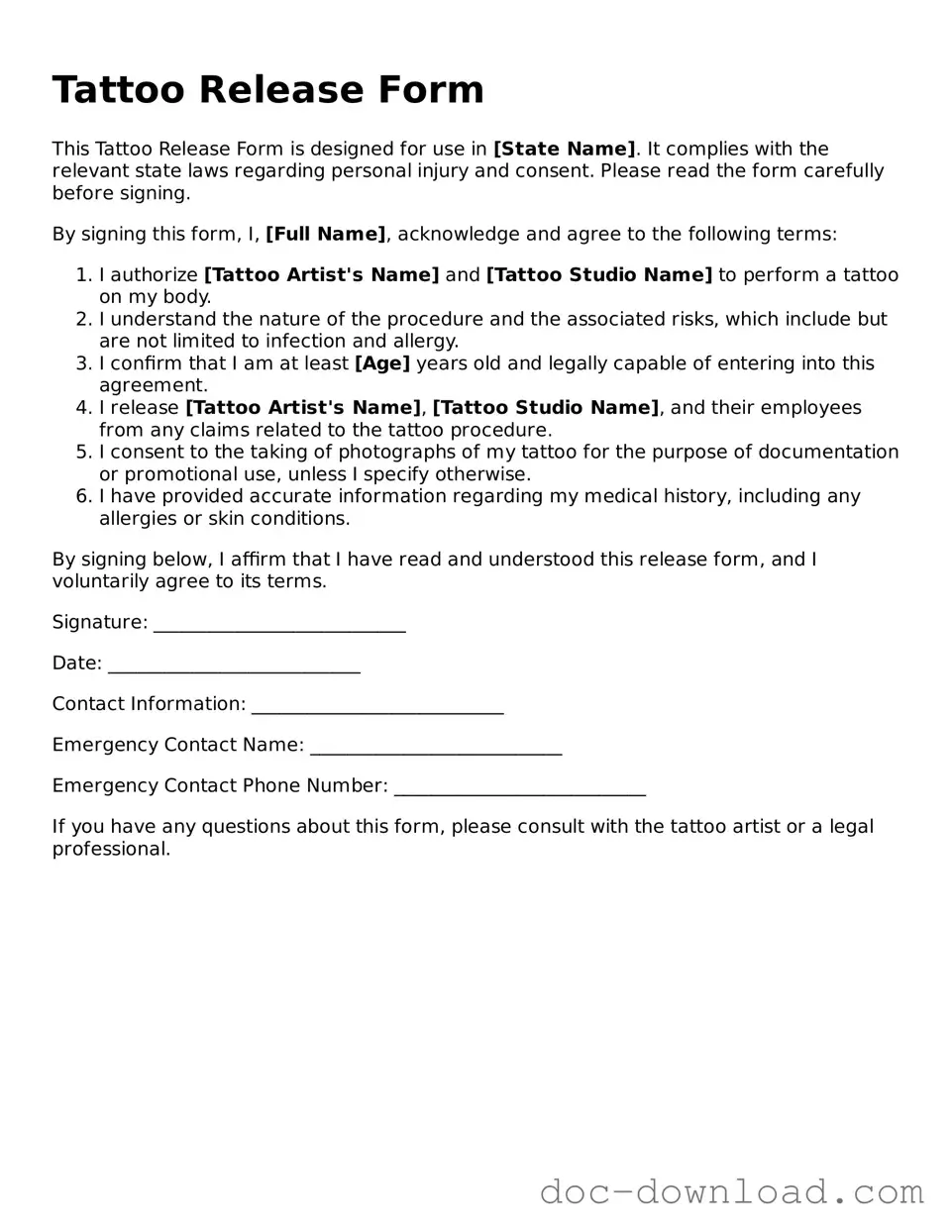The Tattoo Release form is similar to a Photography Release form. Both documents grant permission for the use of an individual’s likeness. In the case of the Photography Release, the focus is on images captured by a photographer, while the Tattoo Release specifically pertains to the artwork on a person's skin. Each form protects the creator's rights and ensures that the individual understands how their image or tattoo may be used in various media.
Another comparable document is the Model Release form. This form is often used in the fashion and advertising industries. It allows a photographer or artist to use a model's image for commercial purposes. Like the Tattoo Release, it requires the model’s consent and clarifies the extent of usage, ensuring that both parties understand their rights and responsibilities.
The California Release of Liability form is essential for those involved in creative activities like tattooing, as it protects individuals from potential legal issues arising from injuries or damages. Similar to the Tattoo Release, this document makes it clear that participants acknowledge the risks and agree not to hold the artist accountable for any consequences. For more information on this topic, you can refer to the following resource: https://topformsonline.com/california-release-of-liability/.
The Video Release form shares similarities with the Tattoo Release as well. It permits the recording and distribution of an individual's likeness in video format. Both forms emphasize the importance of consent and outline how the recorded material may be used. This helps protect individuals from unauthorized use of their image in videos, just as the Tattoo Release does for tattoo artwork.
A Waiver of Liability form is another document that aligns closely with the Tattoo Release. This form typically protects businesses from legal claims related to injuries or damages. While the Tattoo Release focuses on the use of tattoo designs, the Waiver of Liability ensures that participants understand the risks involved in getting a tattoo and agree not to hold the tattoo artist or studio responsible for any potential issues.
The Consent to Treat form is also relevant. This document is commonly used in medical settings, including tattoo parlors, to obtain permission from clients before administering treatment. Similar to the Tattoo Release, it informs individuals about the procedure and its risks. Both forms require clear communication and understanding between the service provider and the client.
A Release of Claims form can be compared to the Tattoo Release as well. This document allows individuals to relinquish their right to sue for specific claims. In the context of tattoos, it would protect the artist from legal action regarding the quality or outcome of the tattoo. Both forms emphasize informed consent and the acceptance of potential risks involved in the process.
The Non-Disclosure Agreement (NDA) is another document that shares some characteristics with the Tattoo Release. An NDA protects confidential information shared between parties. In the tattoo context, it might be used to safeguard unique designs or techniques. While the Tattoo Release focuses on the use of an image, the NDA ensures that proprietary information remains confidential.
Similarly, the Release of Artwork form is pertinent. This document allows artists to transfer rights or permissions related to their artwork. In the case of tattoos, the Tattoo Release grants the tattoo artist the right to use images of the tattoo for promotional purposes. Both forms facilitate the sharing and promotion of artistic work while protecting the rights of the creator.
Lastly, the Informed Consent form is relevant. This document is commonly used in various fields, including healthcare and beauty services. It ensures that clients understand the procedures and any associated risks before proceeding. Like the Tattoo Release, the Informed Consent form emphasizes the importance of clear communication and informed decision-making between the client and the provider.
